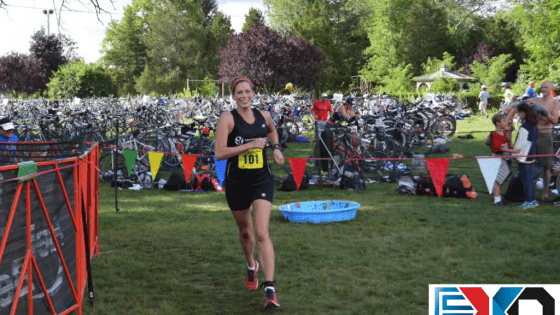Let’s talk about how to pace a short course triathlon (Sprint or Olympic distance). But first we’ll need to establish a common “training zone” language so we’re all on the same page.
“Friel Zones”
The heart rate training zones outlined by Joe Friel are the most commonly used in the triathlon space so we use them for heart rate based training and racing. These zones are calculated as a percentage of your Lactate Threshold Heart Rate (LTHR), which we recommend you determine using the field tests below:
Bike Test:
After a thorough warm up (we recommend you work up a good sweat), perform a 40 minute time trial effort. That is, go at a hard effort that you can sustain…just barely…for 40 minutes, as if racing. Your average heart rate for this effort is your LTHR used to calculate your bike training zones below.
Run Test:
After a thorough warm up, run a 10k, as if racing. Your average heart rate for the test is your LTHR, used to calculate your run training zones. Also record your final time and per mile pace.
Training Zones:
Calculate your zones using the following percentages:
- Zone 1 — 65-78%
- Zone 2 — 78-89%
- Zone 3 — 89-93%
- Zone 4 — 93-99%
- Zone 5 — 100-102%
Now that we’re all speaking the same heart rate zone language and have established a common frame of reference, let’s talk about how we apply these zones to short course race pacing.
The Swim
No heart rate zones here! Instead you’ll need to use some discipline and Rate of Perceived Exertion (RPE) to prevent yourself from going too hard and digging yourself into a hole.
Start:
- Strong swimmers: line up front and center, or a little off to the side in that front row. In our experience, it’s better to be in the front than to be a little timid and end up having to swim around/through/over a ton of people
- Medium: On the sides near the front, rather than in the middle and in the back.
- Weaker: on the sides and even consider letting the field get in the water 10-15″ ahead of you so you have a better chance of finding some clearer water
0-400m
- Understand there is a tendency to go out WAY too hard — the excitement of the start, the gun, the crowd, you’re racing…then wake up at 400m to realize you’ve been sprinting, arms and legs are shelled, heart rate is sky high, etc. In our experience, you’ll then back WAY off the pace to recover and end up swimming much slower than if you…
- Control yourself in that first 400m. You should definitely feel like you’re holding something back. Focus on your form by counting your strokes. Apply some mental attention to your kick and…try not to kick so much. Easy to go nuts with the legs and burn them out 400m into an Olympic race.
400m – Finish
- Once you’ve made it through the confusion and stoopid pacing danger zone of the first 400m, settle into an effort that you can maintain for the length of the swim.
- Our overall swim pacing guidance is “only swim as fast as your ability to maintain form. If you feel your form beginning to be compromised, just slow down.”
The Bike:
Sprint:
- 0-10′: expect to come out of T1 with your heart rate sky high, probably high Zone 4, low Zone 5. We want you to ride the first 10′ at an effort that feels like a low Zone 4…but realize your heart rate may or may not actually come down. That’s fine, but you want to feel like you’re in 4th gear out of 5, with that 5th gear being the one you shift into at…
- 10′ to finish: after 10 minutes…it’s on! Time to get to work. You should be in very high Zone 4, low Zone 5 heart rate, working about as hard as you can on any hills. It’s a race!!
Olympic:
- 0-20′: same as above but you’re going to give yourself a little longer to settle in and ride at a high Zone 3, low Zone 4 effort for the first 20 minutes of the bike. Then…
- 20′ to finish: dial up the effort and your heart rate to that high Zone 4 effort. You’re “almost” going as hard as you can (see your LTHR testing effort above) but not quite. Again, an 8.5-9 out of 10.
The Run
Sprint:
- Overall goal is to negative split the run, if not by actual time then by effort/focus applied to the course.
- 0-.5 miles: get your legs back — high cadence with a neutral to flat footstrike, minimizing the strain on your calves and giving them some time to get in the game.
- .5 miles to 2.5 miles: Zone 5…it’s a race!
- 2.5-3.1: everything you got. Finish strong!
Olympic
- Same negative pacing goal above
- 0-1 mile: same settling in guidance as above, running at low Zone 4 effort, though your actual heart rate may be higher. You should feel like you’re holding back a little, a 7.5-8 out of 10.
- 1-4 miles: settle in to your LTHR testing effort, a high Zone 4, low Zone 5 heart rate. Awesome if you can get mile splits here and can use your LTHR testing pace as a benchmark/whip, running maybe 5-10″ per mile slower to set up a strong finish.
- 4-5.5 miles: dial the pace up a bit. Definitely Zone 5 heart rate in there, 9 out of 10, you’re running at your LTHR testing pace.
- 5.5 – 6.2 miles: forget your heart rate…probably best if you don’t look at it
Finish hard and strong!
Want to Learn More? Take our FREE seminar below!
[button color=”red” size=”large” link=”https://www.endurancenation.us/free-training-seminars/the-short-course-seminar/”]The Short Course Seminar[/button]



Deirdre Robbins
Great tips. Love all the great training tips.